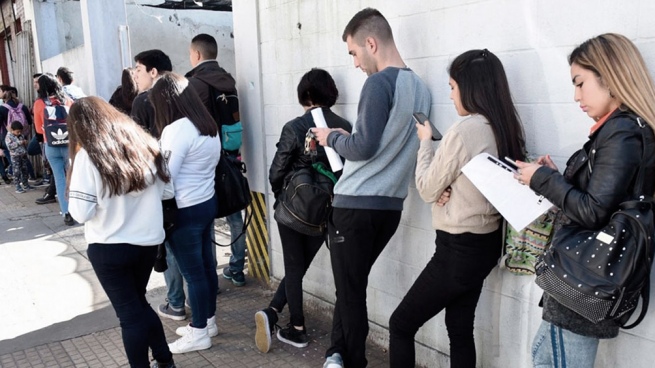The unemployment rate in the member countries of the Organization for Economic Cooperation and Development (OECD) fell for the tenth consecutive month in February and stood at 5.2%, a figure that places it at the levels prior to the coronavirus pandemic , the Paris-based body announced on Tuesday.
In this way, the unemployment rate of the bloc of 38 countries fell one tenth compared to January levelsand recorded the lowest percentage since the statistical series began in 2001.
When the restrictions reached their greatest tightening in April 2020, unemployment reached a peak of 8.8% in the block set.
Currently 34.9 million workers in the organization’s area remain unemployed0.7 million less than before the pandemic.
? ? #Unemployment rate in the #OECD area drops below the pre-pandemic rate to 5⃣.2⃣% in February 2022.
euro area: 6.8%
??: 6.5%
??: 5.9%
??: 10.7%
??: 12.2%
??: 3.7%
??: 2.7%
??: 3.8%
??: 5.5%
??: 2.7%More data here ? ? https://t.co/lfhh2gyuls pic.twitter.com/oVD3TM9Ryc
— OECD ➡️ Better policies for better lives (@OECD) April 12, 2022
“The latest fall in the unemployment rate continues a positive trend and is very welcome news in OECD countries,” said the agency’s chief statistics officer, Paul Schreyer, in a statement.
However, he warned that the OECD “will continue to monitor the situation closely” given “increasing global uncertainty and geopolitical tensions.”
Another bright spot from the February data is that the decline in unemployment was shared across all genders and age groups.

Within the OECD members, the largest falls in unemployment in December in the Eurozone (countries that use the euro as their currency), whose rate averaged 6.8% (compared to 6.9% in January), were recorded in Finland (from 7% to 6.5%), Greece (12.8% to 11.9%), the Netherlands (3.6% to 3.4%) and Spain (12.8% to 12.6% ).
In the same way, youth unemployment fell in said bloc from 14.3% to 14.0%, “continuing its downward trend”.
Likewise, “marked decreases” were registered in Canada (6.5% to 5.5%), South Korea (3.6% to 2.7%), Sweden (8% to 7.3%) and Turkey ( 11.2% to 10.7%), with more modest declines in Australia (4.2% to 4%), the United States (4% to 3.8%) and Japan (2.8% to 2.7% ).
In contrast, unemployment increased in Colombia (12.2% to 12.5%), the Czech Republic (2.2% to 2.4%) and Mexico (3.5% to 3.7%).
Among the 38 member countries, Spain (12.6%), Colombia (12.5%) and Greece (11.9%) are at the head with the highest rates of unemployed; while the Czech Republic (2.4%) and Japan (2.7%) register the lowest numbers.
Although the general average is lower than that of February 2020, Austria, Canada, Colombia, the Czech Republic, Estonia, Hungary, Ireland, Israel, Japan, Mexico, Poland, Slovakia, and the United States continue to register unemployment rates slightly higher than the of said month.

Women (5.4% unemployment) continue to be affected more than men (5.0%), although, in both cases, the February rate presented an improvement compared to January.
Countries such as Turkey (13.4% of unemployed women against 9.3% of men), Spain (14.1% against 11.2%), Greece (15.9% against 8.6%) and Colombia (15, 0% against 10.1%), present the greatest divergences between both genders.
Despite the fact that the OECD rate remains high in the case of young people between 15 and 24 years old (11.1% compared to 4.4% of workers over 25 years old), it presented in February a drop of two tenths.
In countries such as Greece, Spain, Italy, and Sweden, youth unemployment is more than double the general average at 31.1%, 29.8%, 24.8%, and 22.1%, respectively.


















